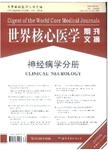重组活化因子Ⅶ在急性颅内出血中的应用
Recombinant activated factor VII for acute intracerebral hemorrhage作者机构:Neurological Institute Box 39 710 W. 168th St. New York NY 10032 United States Dr.
出 版 物:《世界核心医学期刊文摘(神经病学分册)》 (Digest of the World Core Medical Journals:Clinical Neurology)
年 卷 期:2005年第1卷第8期
页 面:3-4页
学科分类:1002[医学-临床医学] 100204[医学-神经病学] 10[医学]
主 题:急性颅内出血 活化因子 血肿体积 血栓形成性 继发出血 计算机断层扫描 安慰剂 百分比变化 行基 失能
摘 要:BACKGROUND: Intracerebral hemorrhage is the least treatable form of stroke and is associated with high *** patients who undergo computed tomograph y (CT) within three hours after the onset of intracerebral hemorrhage, one third have an increase in the volume of the hematoma related to subsequent bleeding. We sought to determine whether recombinant activated factor VII (rFVIIa) can red uce hematoma growth after intracerebral hemorrhage. METHODS: We randomly assigne d 399 patients with intracerebral hemorrhage diagnosed by CT within three hours after onset to receive placebo (96 patients) or 40 μg of rFVIIa per kilogram of body weight (108 patients), 80 μg per kilogram (92 patients), or 160 μg per k ilogram (103 patients) within one hour after the baseline scan. The primary outc ome measure was the percent change in the volume of the intracerebral hemorrhage at 24 hours. Clinical outcomes were assessed at 90 days. RESULTS: Hematoma volu me increased more in the placebo group than in the rFVIIa groups. The mean incre ase was 29 percent in the placebo group, as compared with 16 percent, 14 percent , and 11 percent in the groups given 40 μg, 80 μg, and 160 μg of rFVIIa per k ilogram, respectively (P=0.01 for the comparison of the three rFVIIa groups with the placebo group). Growth in the volume of intracerebral hemorrhage was reduce d by 3.3 ml, 4.5 ml, and 5.8 ml in the three treatment groups, as compared with that in the placebo group (P=0.01). Sixty-nine percent of placebo-treated pati ents died or were severely disabled (as defined by a modified Rankin Scale score of 4 to 6), as compared with 55 percent, 49 percent, and 54 percent of the pati ents who were given 40, 80, and 160 μg of rFVIIa, respectively (P=0.004 for the comparison of the three rFVIIa groups with the placebo group). Mortality at 90 days was 29 percent for patients who received placebo, as compared with 18 perce nt in the three rFVIIa groups combined (P=0.02). Serious thromboembolic advers



